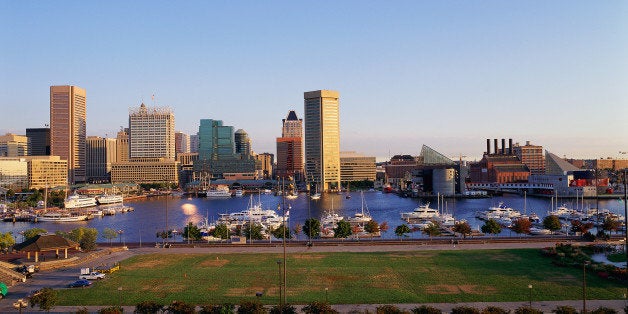
As I assumed leadership of the Baltimore City Health Department one year ago, I wrote about the need to tackle underlying disparities in three critical areas with innovative, evidence-based approaches. Much has happened since then, including April's unrest that has given our work even more urgency. Under Mayor Rawlings-Blake's leadership, and with the dedicated work of our staff and partners, we have improved outcomes as we strive for health equity for Baltimore's residents.
We have helped children better achieve their potential by expanding mental health services to 119 schools, providing students with nearly 300,000 visits to health suites in 180 schools, and obtaining needed funding for our children with an $8.5 million federal grant for reproductive health education and a $1.5 million grant for community-based youth violence prevention. Our signature B'More for Healthy Babies program has experienced continued success, with a 50 percent reduction in sleep-related infant deaths and a 32 percent reduction in teen birth rates. We mobilized support for policy changes and improved services to ensure childhood immunizations, begin trauma-informed care trainings, decrease sales of cigarettes to underage youths, and ban dangerous substances like powdered alcohol and synthetic drugs.
We have taken on the epidemic of substance abuse head-on, launching one of the most aggressive opioid overdose prevention programs in the country. Last year, we trained more than 7,000 people in using the antidote, naloxone; worked with the Police Department to train officers (with over a dozen lives saved by police); and became the first jurisdiction in Maryland to issue blanket prescriptions for all 620,000 residents. We launched a 24/7 crisis and resource phone line for addiction treatment; introduced a "Don't Die" anti-stigma campaign; and worked with state partners to secure $3.6 million toward a stabilization center. This work, featured by the U.S. Senate, is saving lives while changing the understanding that addiction is a disease; treatment exists, and recovery is possible.
We have also made strides to increase care for our most vulnerable populations. We secured a $22 million grant to bring HIV prevention and treatment to underserved populations while creating 70 new jobs in the city. The White House acknowledged Baltimore's leadership in HIV care, as we joined the Fast Track Cities initiative to end AIDS by 2030. In the wake of the unrest, we set up a prescription access line to assist seniors whose pharmacies were closed and arranged shuttles to and from senior buildings for food and banking needs. We started biweekly town halls entitled B'More Health Talks and convened hospital CEOs and community leaders to develop citywide initiatives to assist the most vulnerable including around food access and preventing falls in the elderly.
Over the next year, we will address challenges -- both anticipated and unforeseen -- with urgency and vigor. We will launch Healthy Baltimore 2020, a blueprint for health in the city that features a comprehensive youth health and wellness campaign. Meanwhile, addiction and mental health will remain top priorities as we expand services in other priority areas, including violence prevention, chronic disease prevention and care for older adults.
Our work will be guided by three principle tenets:
1) Go to where people are. We look to increase services in schools so that children won't miss classes to get routine treatment. We aim to expand our Safe Streets program to stop conflicts where they occur and home-visiting to get care to people where they live.
2) Engage the community in setting goals. Our long-term goals are based on scientific best practices to improve life expectancy, but our short-term metrics are developed and shaped by the community.
3) Go upstream and tackle the root causes of poor health. Public health is a powerful tool to fight injustice, and we embrace every opportunity to level the playing field of inequality.
While the health challenges in Baltimore are many, we are a city defining the role of public health and transforming into a model for recovery and renewal.